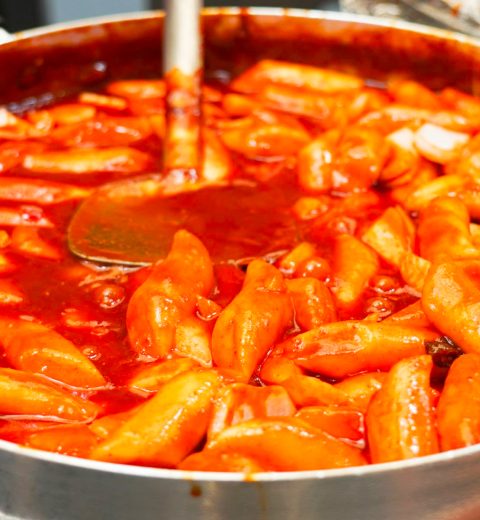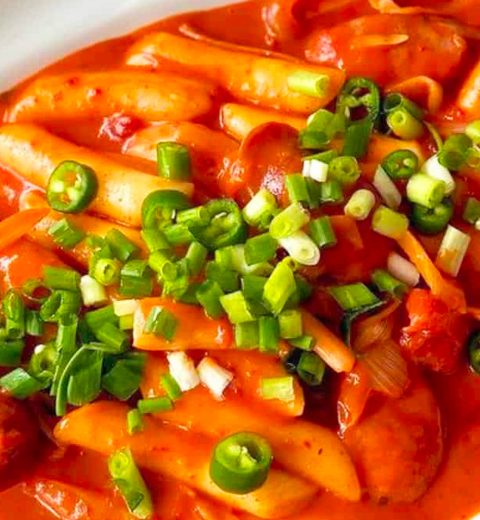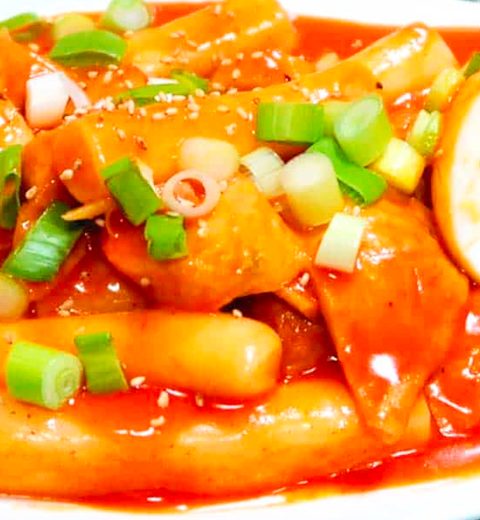If you’re a fan of Korean cuisine or simply enjoy trying new and exciting dishes, you’ve probably come across the mouthwatering delight known as Topokki. This popular Korean street food has gained immense popularity both in its home country and around the world. In this article, we’ll take a deep dive into the origins and history of Korean Topokki, unraveling the story behind this delicious treat.
Topokki, also spelled as topokki, is a beloved Korean dish made with cylindrical rice cakes called tteok, simmered in a spicy and savory sauce. The dish is typically prepared by stir-frying the rice cakes with various ingredients such as gochujang (a red chili paste), soy sauce, garlic, onions, and a variety of vegetables. Topokki is often garnished with sesame seeds and green onions, adding an extra layer of flavor and texture to the dish.
The roots of Topokki can be traced back to the Joseon Dynasty, which lasted from the 14th to the 19th century. During this time, tteok (rice cakes) were a staple food in Korean cuisine. However, the dish we know as Topokki today didn’t exist in its current form. Instead, rice cakes were typically consumed in a simpler manner, such as being boiled and eaten with various condiments.
The transformation of tteok into Topokki as we know it today is attributed to the influence of the Japanese occupation of Korea during the early 20th century. It is believed that the Japanese introduced a dish called “oden” to Korea, which consisted of fish cakes simmered in soy sauce-based broth. Korean street vendors and cooks adapted this concept and began experimenting with different ingredients, leading to the birth of Topokki.
Initially, Topokki was made using a simple combination of tteok and soy sauce. However, as time passed, the dish evolved, and additional ingredients were incorporated to enhance the taste and create the unique flavor profile that Topokki is known for today. The introduction of gochujang, a fermented red chili paste, played a significant role in giving Topokki its distinctive spicy kick.
During the Korean War in the 1950s, Topokki gained even more popularity as an affordable and filling meal option. Street food vendors started selling Topokki from portable carts, making it accessible to a wider audience. Over the years, Topokki has become an integral part of Korean street food culture, with countless stalls and restaurants specializing in this delicious dish.
In recent times, Topokki has transcended its humble origins and has become a popular comfort food enjoyed by people of all ages and backgrounds. It has also gained international recognition and is now available in Korean restaurants worldwide, catering to the cravings of Topokki enthusiasts everywhere.
Apart from its rich history, Topokki also holds cultural significance in Korea. It is commonly associated with celebrations, particularly during festive occasions such as Seollal (Lunar New Year) and Dano (Korean traditional holiday). Families and friends often gather together to share a delicious plate of Topokki, symbolizing unity and good fortune.
The enduring popularity of Topokki can be attributed to its unique combination of flavors and textures. The chewy texture of the rice cakes, coupled with the spicy and slightly sweet sauce, creates a harmonious balance that keeps people coming back for more. It’s no wonder that Topokki has become a beloved comfort food for Koreans and a favorite among food enthusiasts worldwide.
In conclusion, the origins and history of Korean Topokki are deeply rooted in Korean culinary traditions and the influences of historical events. From its humble beginnings during the Joseon Dynasty to its transformation into a beloved street food during the Korean War, Topokki has come a long way. Today, it continues to captivate the taste buds of food lovers around the globe, with its rich flavors and cultural significance. So, the next time you savor a plate of Topokki, remember the journey it has taken to become the iconic dish it is today.



